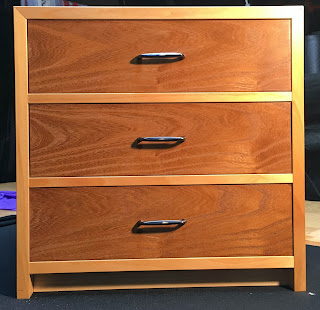Smaller Mulberry Cabinet

I find it helpful to make something more than once in the hope that I might improve the product and speed up the build as the incarnations progress. This project is a repeat of the 3 drawer cabinet in my last post. Only smaller - and I made the cabinet first this time, then made the drawers to fit.








